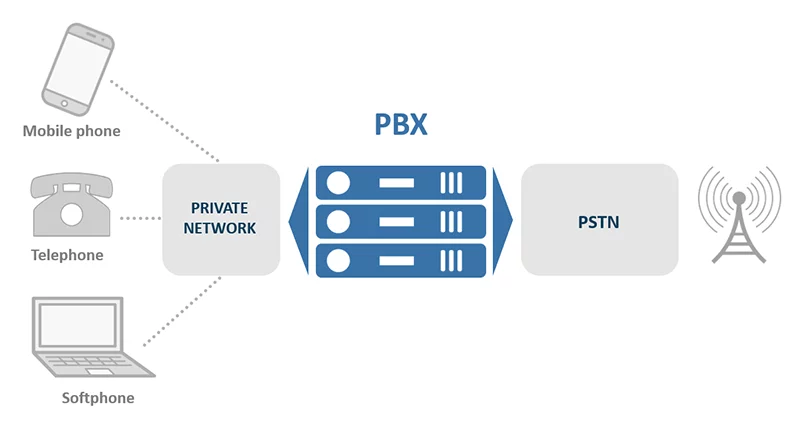Sustainability is one aspect reeling in everybody’s mind in general, and this is coming more towards the forefront with the generational mind shift. Sustainable goals at this point imply explicitly to data centers. More and more enterprises aim to operate data centers in a more environmentally sensitive way, reducing the environmental impact caused due to digital infrastructure. Running eco-friendly data centers is undoubtedly the top priority for all in 2022 and beyond.
Since data centers are the epicenter of connectivity for several businesses across the globe, they do deal with the processing of high volume data, which leads to high carbon emissions and more power consumption. It has become a matter of concern for enterprises, reducing their efficiency and adding extra data maintenance costs. Therefore, modern data centers are slowly getting to focus on the green revolution and have a vested interest in making the data centers energy-efficient and sustainable. In fact, customers are more inclined to buy services from data centers that are strong advocates of green data centers.
In the fast-paced digital revolution, data centers can become energy efficient and green by investing in natural resources, advanced cooling techniques, low power electronics, automation tools like the new generation data center management software, and equipment with high heat resistance properties. There is a growing approach towards experimenting with various techniques that allow data centers to attain a high level of sustainability.
Level of sustainability
The level of data-center sustainability relies on the following parameters.
- PUE (Power usage effectiveness)
- WUE (Water Usage Effectiveness)
- CUE (Carbon Usage Effectiveness)
- Monitoring data center
- Reduce, re-use, and recycle
PUE ( Power Usage Effectiveness)
When an organization decides to design a green data center, the foremost task is to evaluate power consumption. Data centers, on average, exhibit power consumption of 7kW per rack, but with the pressure of processing a high volume of data, many data centers in the U.S are observing an increase in the rack density to 15-20kW per rack. Factors that influence the rack density also include high computing workloads such as AI, cryptocurrencies, real-time processing, complex business operations, data analytics, etc. In order to make data centers energy-efficient, data centers follow PUE (Power Usage Effectiveness) metrics.
PUE is the standard metric used by many to evaluate the energy consumption of the data centers. Various elements in the data center that could influence the PUE include cooling systems, lighting systems, ventilation, IT equipment, power distribution components, and other sources such as fire suppression systems and security. In short, it is the total energy that is consumed by the data center to route the data on the network. An ideal PUE for the data center is 1.0, which means zero loss of energy, practically, which is not possible. However, by making a few adjustments in the data center facility, data center owners can bring it closer to it.
IT load is the prime reason for high PUE, and data centers can become more sustainable by reducing their IT load. Outdated IT equipment consumes more power and does not perform at full scale. They are overheads for the data centers and increase the IT load. To reduce the PUE, the data center should either replace this IT equipment or use a data management system that automatically shuts these servers down when there is less traffic. Data centers can take the help of technology such as deduplication software to avoid duplicate data and reduce the energy used to process unnecessary data. It also enhances servers’ storage capacity.
PDUs or power distribution units supply electricity to the servers. If the right PDUs are not deployed, it could lead to a significant loss in energy. Data centers can use smart PDUs such as monitored PDUs, switch PDUs, Dual circuit PDUs to minimize the energy loss and costs associated with the power distribution.
Another way to reduce energy consumption in data centers is to use server virtualization. Virtualization of servers is a process of dividing physical servers into multiple independent virtual servers with the help of software applications. The data centers utilizing virtual servers minimize the hardware usage and amount of electricity required to cool down this hardware.
After IT equipment, cooling systems consume more energy in data centers. It is necessary that data centers equip themselves with the best cooling mechanism to offset the energy consumption. A poorly managed cooling system can consume massive power and add high costs to the service providers. Data server providers should choose server cooling systems wisely. So far, the Legacy system has used chillers and CRAC (computer room air conditioning) to dissipate heat, which later evolved into a hot aisle and cold aisle cooling system. The hot aisle and cold aisle are still prevalent among many data centers, but in the age of hyper-scale data centers, it requires a more effective cooling system. Since liquid cooling systems are more effective in transferring heat than air, they are emerging as more energy-efficient than air-based cooling.
WUE (Water Usage Effectiveness)
Data centers rely on water resources to cool down their servers. With millions of servers worldwide operating round the clock, it requires billions of gallons of water. To address this issue, large companies are putting efforts to reduce their dependency on potable water and use rainfall, gray water, and recycled water for their data centers. I.T giant such as Microsoft is investing in a two-phase liquid immersion cooling system to control water wastage and make the cooling system more effective. This technique allows servers to operate normally while fully immersed in the cooling fluid, and their engineers are further exploring this technique to make it environmentally friendly. Besides these, direct liquid cooling can accommodate 100kw per rack and become more powerful regardless of space. Unlike traditional cooling systems that make huge sounds due to cooling fans, liquid cooling systems are much more silent than air cooling systems.
CUE (Carbon Usage Effectiveness)
CUE is the metric used by data centers to determine the CO2 emission, and it is used along with PUE to assess the data centers’ sustainability level. CUE is calculated by dividing the total CO2 emission by the total energy consumed by the I.T. computing equipment. 0.0 is the standard CUE value for the data centers. Currently, data centers contribute around 0.3% to overall carbon emissions.
Datacenters require electricity to run their data centers, and usually, the source of electricity is fossil fuels (coal or gas). In order to reduce carbon emission, the data centers are looking to replace fossil fuels with renewable energy sources such as hydropower, wind energy, solar power, etc. They even ensure that their power backup has zero carbon emission. Although renewable energy sources such as solar panels and wind turbines are better options for a sustainable data center, they have interdependencies ( wind speed, sunshine, etc.). In order to overcome this issue, several I.T. giants like Google, Microsoft are exploring alternative sources of energy such as lithium-ion batteries for power-backup and reducing carbon footprint. It even takes less space compared to diesel generators and is cost-effective.
Monitoring data centers with AI/ML
The data center goal for environmental stewardship does not end with making data centers energy efficient, but they also need to have a holistic view of every aspect of data center performance. They need to monitor all environmental variables like temperature, humidity, airflow, fire suppression, etc., that could hinder data-center performance. AI-based data centers analyze all these variables automatically and fix the issues without human intervention. AI can even be used to monitor anomalies in the data center, such as plenum obstruction, broken equipment, power outages, etc.
The AI predictive analytics enable data engineers to discover the data points or data nodes that are likely to fail in the future. It learns from the previous models and makes the adjustment to make the data center more energy-efficient and shuts down servers that are no longer in use. Further, the cognitive skill of AI helps data centers to decide on energy consumption and takes decisions on the efficient allocation of assets. Google’s DeepMind is an exceptional example of using AI/ML for green data centers.
Reduce, reuse, and recycle
Since data centers consume a considerable amount of energy, emphasizing on three R’s – Reduce, Reuse and Recycle, to achieve higher sustainability and optimize energy usage is the need of the hour. Reducing idle IT equipment, low-performing servers, and hardware that consume more energy from the infrastructure; reusing the waste heat, and converting it into valuable assets are a few tips. It can be a source of income for data centers by selling the waste heat to city dwellers or government bodies. Recycling e-waste and increasing the lifespan of electronics can also contribute towards sustainability.
Conclusion
It is evident that as data centers set for the future, there is an increasing need to become more sustainable. They need to ensure that data centers handle a large volume of data without degrading the environmental values. Whether the data is handled on-premise, collocation site, or on a cloud, the data-servers need to reduce the server downtime and become fast. The data center providers have realized that merely focusing on the design, architecture, and service quality is not sufficient to keep pace with the digital world but should emphasize reducing power consumption and carbon footprint. Moving forward, data center providers need to invest in technologies and solutions that help them in justifying their commitment to making data-center green. Above all, investing in the right data center infrastructure management solution can help in increasing the level of sustainability for today’s data center.
Jimmy Johnson is a senior content writer at GoodFirms‘ specializing in various technology topics. Currently, Jimmy writes on project development strategies, software solutions, SEO, latest technology trends, and scouts on many exciting technologies that empower businesses.















Leave a Reply